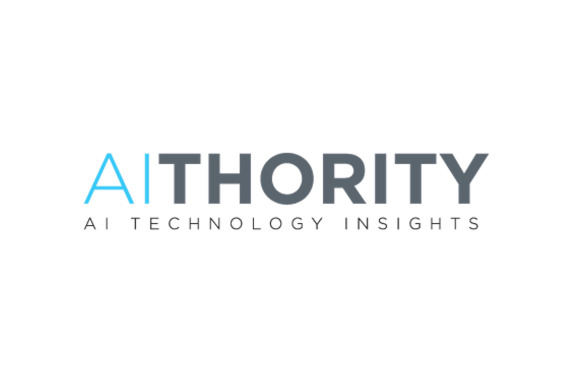The Importance of Incorporating ESG Into Your Bank’s TPRM Strategy
| By Aki Eldar
The pandemic has permanently changed the dynamics of the global economy. Businesses and investors have shifted focus from profits to people, and human impact is becoming as important as economic impact. COVID-19 clarified that sustainability and human issues have a profound and direct influence on economic stability.
This shift has affected financial services organizations who are now embracing the environmental, social and governance (ESG) agenda with new models and services. Wealth managers are moving towards ESG-informed investing; retail banks are creating new sustainable products targeting millennials; capital markets are moving towards ‘green underwriting. Many commercial and retail bank customers can now choose from various ESG-linked funds, bonds and assets.
These dynamics are also changing how financial institutions approach their third-party risk management. It is not enough for banks to solely focus on their own ESG goals, they must also ensure that their third-party partners are not participating in unethical practices such as polluting the Amazon, using child labor, or funneling funds to terrorist organizations.
Drivers of ESG Adoption in the Financial Services Industry
While there is an internal desire within financial services firms to encourage third-party ESG initiatives, there are two major external factors that are accelerating efforts:
Meeting ESG-Based Regulatory Requirements: Globally, regulations are being created to enforce ESG priorities, particularly when it comes to the environment. For example, the Bank of England (BoE) has created a climate-change-related stress test for banks and insurers, and a U.S. Executive Order on Climate-Related Financial Risk includes a provision for the assessment of risk by financial regulators to ensure the Office of the Comptroller of the Currency (OCC), U.S. Securities and Exchange Commission (SEC) and U.S. Department of Justice (DOJ) account for how climate change can disrupt the stability of financial institutions. In addition, in June 2021, the U.S. House of Representatives passed H.R. 1187 – Corporate Governance Improvement and Investor Protection Act, which requires publicly traded companies to disclose information related to ESG performance metrics – including climate change-related risks and the demographic composition of the board of directors and executive officers.
Appealing to Conscious Consumers: Buyers want to align with businesses that are sensitive to environmental and social issues, and are increasingly choosing financial services firms that prioritize the underrepresented rather than a homogenized market. Socially aware financial institutions need to cultivate diverse teams and ensure that network partners are also socially responsible.
Considerations for Implementing ESG within TPRM
People
Whether it is fear of change, change management, communication, collaboration, politics, control or power, people often complicate any improvement exercise. Perhaps the most critical “people” challenge is the tone at the top, where leadership must understand the value of improving ESG within their TPRM program and support investing the firm’s time, money and human resources. Commitment from the C Suite and the Board can make the difference between saying the Company is doing the right things and driving the change to actually do the right thing.
Process
Process considerations include a communication plan that outlines leadership commitment, identifies each participant’s role and benefit, the advantage for the firm, and the execution plan required to reach the objectives. The execution plan starts with an evaluation of the current state of TPRM and ESG related information, process, identifies gaps, challenges, etc. and maps out changes, timelines, roles, objectives, and improvements required to reach the desired end state. This plan should also address concerns implementing new processes and technologies.
Technology
Even with proper tone at the top, good communication and execution plans, improving ESG within TPRM is still challenging as most firms already struggle with limited resources against the scale, complexity, and frequency of change in their programs. Technology can and should be leveraged to bridge the gap and is especially relevant when considering the vast amount of additional data and processes involved. With budgets tight, maximizing value from current TPRM technology and data will be a critical key to success for many firms.
Challenges of Measuring and Monitoring ESG Initiatives
As financial services firms look to prove themselves to regulators and consumers, it’s difficult to demonstrate and verify how well they incorporate ESG. Consumer, Trade, and Watchdog organizations are on high alert for ‘greenwashing,’ which is when a business shares misleading information about how the company is becoming more sustainable. Accordingly, financial firms must create new metrics for assessing and demonstrating their focus on ESG as part of TPRM.
This requires each firm to take inventory, manage, and monitor their ESG actions and their third parties’ efforts. Many are unaware of what ESG initiatives are in place within their partner ecosystem and lack mechanisms to manage and collect information that validates and corroborates third parties’ policies. It’s difficult to accurately report findings and convey to regulators that ESG it is not just a policy on their website, but an active and ongoing initiative with leadership engagement and measurable metrics to support and demonstrate improvement.
Compounding the problem is the massive amount of ESG data. For example, more than a hundred industry data sources exist just for supplier diversity alone. Having access to this information does not expose the value of the data without additional review and validation steps being added to an already overloaded process with too many variables to manage effectively.
ESG related data is hidden in unstructured content in reports and documentation, available in lists and subscription data services that monitor concerns such as anti-terrorism and conflict minerals, all of which must be consumed. Deriving meaning and value from all of this structured and unstructured data is the next challenge, and while most firms have embraced TPRM workflow automation, significant amounts of human interpretation is still required. Given the number of touchpoints and data sources, many organizations do not have enough time, resources or staff to consume all the inputs and correlate them to all the ESG risks a third party could pose.
How to Bring TPRM Intelligence to ESG
Implementing ESG into TPRM is challenging and new for many financial institutions, even while these changes must be enabled sooner rather than later. Already overloaded with TPRM process and data, banks need to consume even more information from additional various sources faster, more efficiently, and frequently to support ESG programs. At the same time, most are focused on reducing TPRM review and analysis cycle times to achieve faster time to value from their third parties.
Financial institutions need a more intelligent approach to integrate ESG factors effectively and efficiently into TPRM. TPRM intelligence automates the manual effort out of this process, empowering organizations to better identify and anticipate ESG concerns, and more quickly conform to rapidly evolving ESG requirements. Advanced technologies, including cognitive computing technologies such as artificial intelligence (AI) and proprietary natural language processing (NLP) algorithms are available to analyze third-party content and validate and cross-reference it with other data sources. These tools complement workflow automation, saving organizations significant time, effort, and cost associated with manual work.
AI enables data mining from questionnaires, evidence documents, data feeds and consortiums and transforms it into actionable risk exposure insights with specific action plans. An intelligent TPRM platform continuously monitors and digitizes data collection from numerous sources around-the-clock. This flexibility allows financial services firms to leverage data sources previously unused, or underutilized due to a lack of manual bandwidth. As ESG requirements evolve, new controls and data sources can be added automatically to all third parties.
As society continues to embrace and prioritize ESG financial institutions must find better ways to more efficiently monitor third parties to meet regulators’ and consumers’ demands for improvement. While it is complicated to collect and analyze data manually, advanced technologies provide an intelligent path forward that makes it possible to integrate ESG information into TPRM more effectively.


